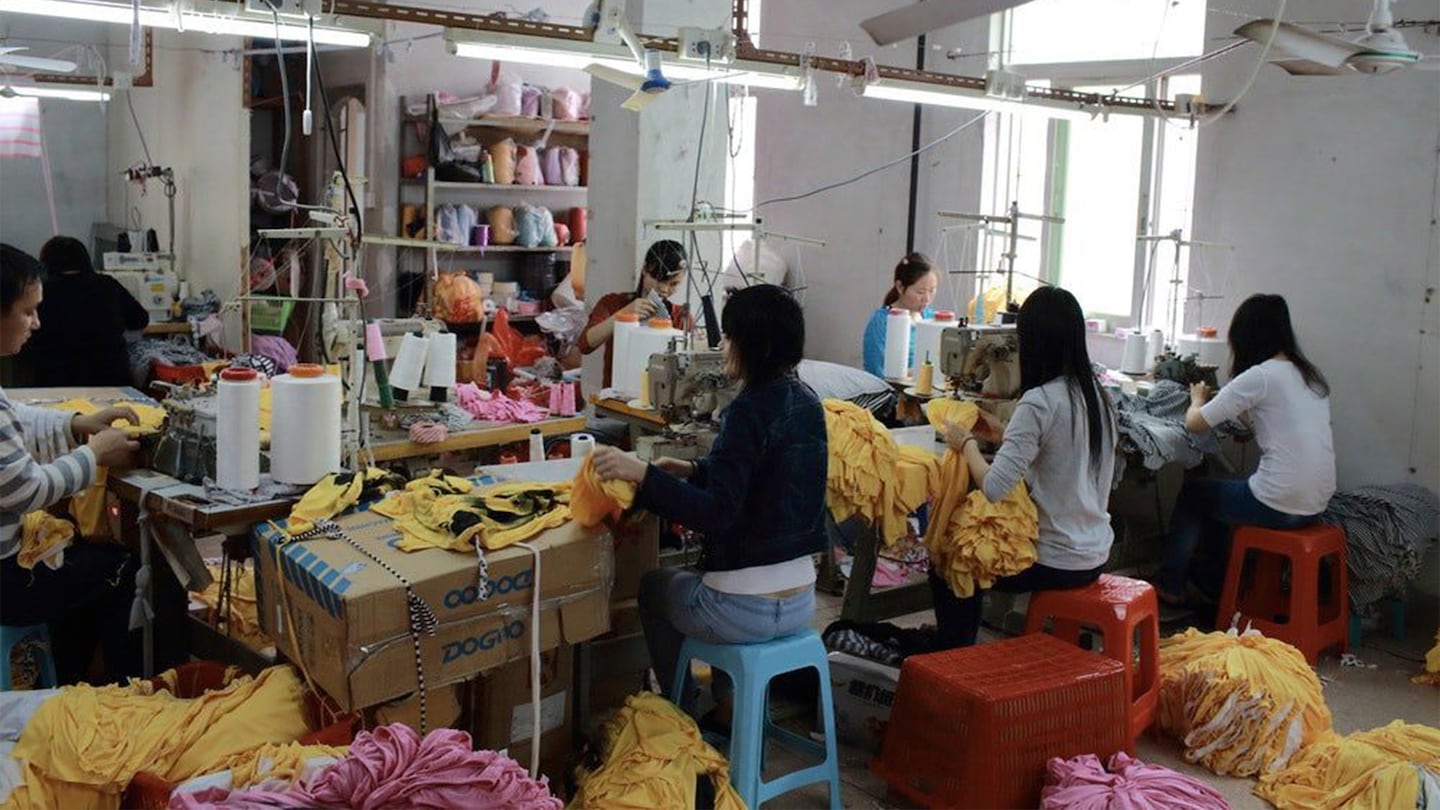
The Business of Fashion
Agenda-setting intelligence, analysis and advice for the global fashion community.

Agenda-setting intelligence, analysis and advice for the global fashion community.

Fashion still has a long way to go when it comes to solving its forced labour problem.
A new report from KnowTheChain, a division of the Business & Human Rights Resource Centre, a London-based non-profit organisation, used public disclosures to evaluate the progress — or lack thereof — fashion companies are making when it comes to workers’ rights. It scored fashion companies on factors including whether their supply chain respected the International Labour Organisation standards; if it had established clear internal responsibilities to address risks of forced labour; if they supported worker empowerment and if they had programmes in place to respond to forced labour allegations. The companies are scored on a range from zero to 100; the average fashion company’s score was 21.
According to the report, luxury companies are a particularly egregious offender, with the second lowest average score for an overall sub-sector. LVMH’s score — out of 100 — is 6; Prada’s is 9 and Kering’s is 23. Of the luxury companies benchmarked, only seven out of 20 disclosed the first full tier of their suppliers with names and addresses. Despite more than half of luxury companies disclosing that they source materials or labour in at least one of the countries at risk for forced labour, such as China, Ethiopia or India, only four out of 20 reported human rights risks identified in their supply chain.
“Luxury’s public disclosure on these issues is really poor,” said Áine Clarke, head of KnowTheChain and investor strategy at Business & Human Rights Resource Centre. “There is a complete lack of transparency on what is happening behind closed doors.”
ADVERTISEMENT
Lululemon was the top scoring fashion company, at 63, the only fashion company that did not receive a failing grade; while Ferragamo was one of the lowest, at 4. Only two fashion companies scored above a 50. The report found allegations of forced labour in the supply chains of nearly half of the 65 organisations included, with only 22 percent disclosing an example of solutions for workers in their supply chains.
“In vital sourcing countries for fashion, we’re seeing a regression or rollback of labour laws, in order to make these places more competitive for business in the wake of the pandemic, economic turbulence and a decrease in consumer demand,” said Clarke. “Large apparel and footwear companies ought to be reacting to this and asking themselves whether workers in their supply chain are protected.”
The last few years have seen fashion’s commitment to crack down on the use of forced labour in supply chains take centre stage. In 2022, the US introduced the Uighur Forced Labour Prevention Act, a piece of legislation that bans the importation of goods made in China’s Xinjiang region, where the Chinese government is accused of a campaign of detention and forced labour against Uighur Muslims. At the end of last year, EU lawmakers negotiated a landmark piece of legislation that would require large companies to take measures to address forced labour in their supply chains.
Still, as October’s Bangladeshi garment workers protests over a low wage hike — which turned violent after a clash with police — show, change doesn’t come easily. While major fashion companies, including PVH Corp. and Levi’s, supported the protesters’ call for a larger pay increase, the report states that wage hikes alone won’t improve the livelihoods of workers in sourcing countries or reduce the risk of forced labour.
Instead of passing responsibility onto suppliers and sourcing countries, fashion companies need to amend their purchasing practices and ensure their supply chain is traceable, the report found. KnowTheChain recommends companies support worker empowerment by entering binding contracts with workers unions. Brands’ purchasing practices contribute to whether workers can earn a decent living wage, and companies interested in lowering risk of using forced labour should anticipate and plan for necessary labour costs.
“Regardless of one’s ethical standpoint, a lack of transparency and due diligence is bad business,” said Clarke.
Large companies in the European Union will have to identify and take remedial action if they find their supply chains employing child labour or damaging the environment, the bloc’s lawmakers and council of member states agreed on Thursday.
Canada’s corporate ethics watchdog said on Tuesday it was investigating Ralph Lauren’s Canada unit to probe allegations the apparel retailer’s supply chain and operations in China used or benefited from the use of Uyghur forced labour.
A total of 631 apparel, footwear and textile shipments with a combined value of $29.55 million have been stopped under the Uyghur Forced Labor Prevention Act (UFLPA) since it came into effect in June 2022, according to statistics published Tuesday by US Customs and Border Protection.

Yola Mzizi is the Editorial Apprentice at The Business of Fashion (BoF). She is based in New York and provides operational support to the New York team and writes features for BoF and The Business of Beauty.
Traces of cotton from Xinjiang were found in nearly a fifth of samples from American and global retailers, highlighting the challenges of complying with a US law aimed at blocking imports that could be linked to forced labour in China.
The fashion industry continues to advance voluntary and unlikely solutions to its plastic problem. Only higher prices will flip the script, writes Kenneth P. Pucker.
The outerwear company is set to start selling wetsuits made in part by harvesting materials from old ones.
Companies like Hermès, Kering and LVMH say they have spent millions to ensure they are sourcing crocodile and snakeskin leathers responsibly. But critics say incidents like the recent smuggling conviction of designer Nancy Gonzalez show loopholes persist despite tightening controls.